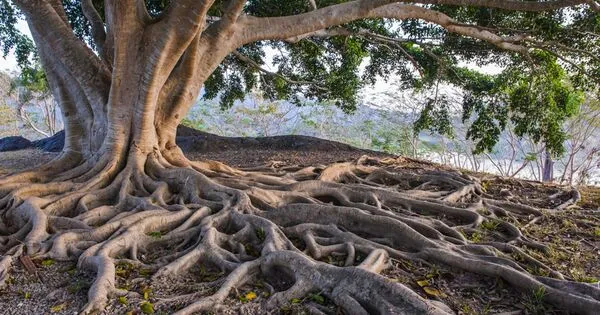According to a new study, the evolution of tree roots may have triggered a series of mass extinctions that rocked the Earth’s oceans over 300 million years ago. A study discovered evidence that the evolution of tree roots over 300 million years ago caused mass extinction events via the same chemical processes that cause pollution in modern oceans and lakes.
Mass extinctions are linked to major environmental changes over time. The problem, of course, is that other periods of no mass extinction coincide with periods of environmental change, and it is fair to say that we could not predict all mass extinctions using only nonfossil data.
According to a study led by IUPUI scientists and colleagues in the United Kingdom, the evolution of tree roots may have triggered a series of mass extinctions that rocked the Earth’s oceans over 300 million years ago.
The evidence for this new view of a remarkably volatile period in Earth’s prehistory is reported in the Geological Society of America Bulletin. Gabriel Filippelli, Chancellor’s Professor of Earth Sciences in the School of Science at IUPUI, and Matthew Smart, a Ph.D. student in his lab at the time of the study, led the study.
Our analysis shows that the evolution of tree roots likely flooded past oceans with excess nutrients, causing massive algae growth. These rapid and destructive algae blooms would have depleted most of the oceans’ oxygen, triggering catastrophic mass extinction events.
Gabriel Filippelli
“Our analysis shows that the evolution of tree roots likely flooded past oceans with excess nutrients, causing massive algae growth,” Filippelli said. “These rapid and destructive algae blooms would have depleted most of the oceans’ oxygen, triggering catastrophic mass extinction events.”
The Devonian Period, which lasted 419 million to 358 million years before the evolution of life on land, is known for mass extinction events that killed nearly 70% of all life on Earth. The study’s process, known scientifically as eutrophication, is strikingly similar to the modern, albeit smaller-scale, phenomenon that is currently fueling broad “dead zones” in the Great Lakes and the Gulf of Mexico, where excess nutrients from fertilizers and other agricultural runoff trigger massive algae blooms that consume all of the water’s oxygen.
The difference is that these past events were likely fueled by tree roots, which pulled nutrients from the land during times of growth, then abruptly dumped them into the Earth’s water during times of decay.
The theory is based upon a combination of new and existing evidence, Filippelli said.

Based on a chemical analysis of stone deposits from ancient lake beds, including samples from sites in Greenland and off the northeast coast of Scotland used in the study, the researchers were able to confirm previously identified cycles of higher and lower levels of phosphorus, a chemical element found in all life on Earth.
They were also able to distinguish between wet and dry cycles using signs of “weathering” – or soil formation – caused by root growth, with greater weathering indicating wet cycles with more roots and less weathering indicating dry cycles with fewer roots.
Most significantly, the team found the dry cycles coincided with higher levels of phosphorus, suggesting dying roots released their nutrients into the planet’s water during these times.
“It’s not easy to peer over 370 million years into the past,” said Smart. “But rocks have long memories, and there are still places on Earth where you can use chemistry as a microscope to unlock the mysteries of the ancient world.”
Because the phosphorus cycles occurred at the same time as the evolution of the first tree roots – a feature of Archaeopteris, which was also the first plant to grow leaves and reach heights of 30 feet – the researchers were able to identify tree root decay as the primary suspect behind the Devonian Period extinction events.
Fortunately, modern trees do not cause similar devastation, according to Filippelli, because nature has evolved systems to mitigate the impact of rotting wood. In addition, the depth of modern soil retains more nutrients than the thin layer of dirt that covered the ancient Earth.
However, the study’s findings shed light on other newer threats to life in Earth’s oceans. The study’s authors note that others have argued that pollution from fertilizers, manure, and other organic wastes, such as sewage, has pushed the Earth’s oceans to the “edge of anoxia,” or a complete lack of oxygen.
“These new insights into the catastrophic consequences of natural events in the ancient world may serve as a warning about the consequences of similar conditions arising from the human activity today,” Fillipelli said.















